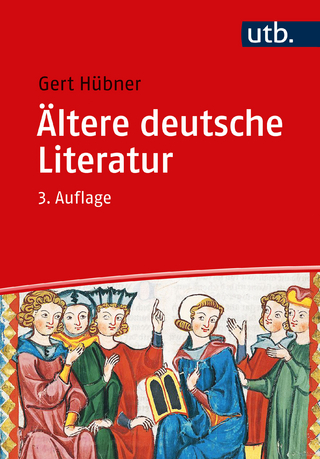
Caliphs and Merchants
Oxford University Press (Verlag)
978-0-19-885582-8 (ISBN)
Caliphs and Merchants: Cities and Economies of Power in the Near East (700-950) offers fresh perspectives on the origins of the economic success of the early Islamic Caliphate, identifying a number of previously unnoticed or underplayed yet crucial developments, such as the changing conditions of labour, attitudes towards professional associations, and the interplay between the state, Islamic religious institutions, and the economy.
Moving beyond the well-studied transition between the death of Justinian in 565 and the Arab-Muslim conquests in the seventh century, the volume focuses on the period between 700 and 950 during which the Islamic world asserted its identity and authority. Whilst the extraordinary prosperity of Near Eastern cities and economies during this time was not unprecedented when one considers the early Imperial Roman world, the aftermath of the Arab-Muslim conquests saw a deep transformation of urban retail and craft which marked a distinct break from the past. It explores the mechanisms effecting these changes, from the increasing involvement of caliphs and their governors in the patronage of urban economies, to the empowerment of enriched entrepreneurial tā%gir from the ninth century.
Combining detailed analysis of a large corpus of literary sources in Arabic with presentation of new physical and epigraphic evidence, and utilizing an innovative approach which is both comparative and global, the discussion lucidly locates the Middle East within the contemporary Eurasian context and draws instructive parallels between the Islamic world and Western Christendom, Byzantium, South-East Asia, and China.
Fanny Bessard is a historian of early and classical Islam with expertise in Arabic historiography, as well as a practicing archaeologist with a decade of field experience in the Near East and Central Asia. Before joining the University of Oxford she held a Newton International Fellowship at SOAS (2013-15), a Leverhulme Early Career Fellowship at the University of St Andrews (2015-16), and a Lectureship in the Department of Historical Studies at the University of Bristol (2016-19). Her main research interests lie in the social and economic transformations of the Near East from 700 to 1000.
Frontmatter
List of Illustrations
List of Abbreviations
Notes on Transcription and Dates
Maps
0: Introduction
1: The Historical Context
1. Conquests
2. Ideology
3. Agriculture
4. Trade
PART I. PATRONAGE AND POWER
2: A Stamp of Authority
1. A Caliphal officium
2. Sowing and reaping
3. Exercise and assertion of power
3: New Perspectives on Urban Economic Planning
1. Growth of communal working areas in the Levant (700-750)
2. Process of exclusion of economic clusters under early 'Abb=asid rule
3. Raba.d in Central Asia
4. Isolation of domesticity
4.1. Productive and public use to domestic shelter
4.2. An emphasis on intimacy
3a: Conclusion
PART II. REVISITING THE LEGACIES
4: Artisans to Producers
1. The progression of change
1.1. Persistence of Roman practices after 700
1.2. Downfall of 'home' production after 800
2. Approaches to key industries
2.1. Pottery
2.2. Glass-making
2.3. Textile industry
3. Food processing industries
3.1. Oil and wine industries
3.2. Watermills
5: Reshaping Market-Places
1. From the ergast=erion to the s=uq
2. Covered market-places
2.1. Funduq
2.2. D=ar, nh=an, and qays=ariyya
5a: Conclusion
PART III. INSTITUTIONAL AND RELIGIOUS GENERATORS
6: Money Supply and Currency
1. Out with the old
2. Coinage in common
3. Balancing supply and demand
7: Islamifying the Economy
1. Commercial rituals and Islamic worship
2. Mosques and measures
3. The mu.htasib
7a: Conclusion
PART IV. ECONOMY AND SOCIAL CHANGES
8: The Evolution of Labour Patterns
1. Conditions of labour
1.1. Servile labour
1.2. Free labour
1.3. Wage labour
2. Changing patterns of institutional identity
3. Status and composition of the labour force
3.1. Disdained and tolerated professions
3.2. Changing division of labour
3.3. Female artisans
9: Twilight of the Clerical and Landowning Elite, Rise of Tu%g%g=ar
1. Retailers and traders before 800
2. Ascendance of tu%g%g=ar from 800
2.1. Financial
2.2. Identity
2.3. Cultural
3. Tu%g%g=ar's political and religious careers
4. Tu%g%g=ar and authority
4.1. The defense of trading interests
4.2. Tu%g%g=ar and economic expansion
9a: Conclusion
10: Conclusion
Endmatter
Appendix
References
Index
| Erscheinungsdatum | 15.01.2021 |
|---|---|
| Reihe/Serie | Oxford Studies in Byzantium |
| Zusatzinfo | 106 black-and-white and colour illustrations and 3 maps |
| Verlagsort | Oxford |
| Sprache | englisch |
| Maße | 163 x 241 mm |
| Gewicht | 1 g |
| Themenwelt | Geisteswissenschaften ► Archäologie |
| Geschichte ► Allgemeine Geschichte ► Mittelalter | |
| Geisteswissenschaften ► Geschichte ► Regional- / Ländergeschichte | |
| ISBN-10 | 0-19-885582-6 / 0198855826 |
| ISBN-13 | 978-0-19-885582-8 / 9780198855828 |
| Zustand | Neuware |
| Haben Sie eine Frage zum Produkt? |
aus dem Bereich


